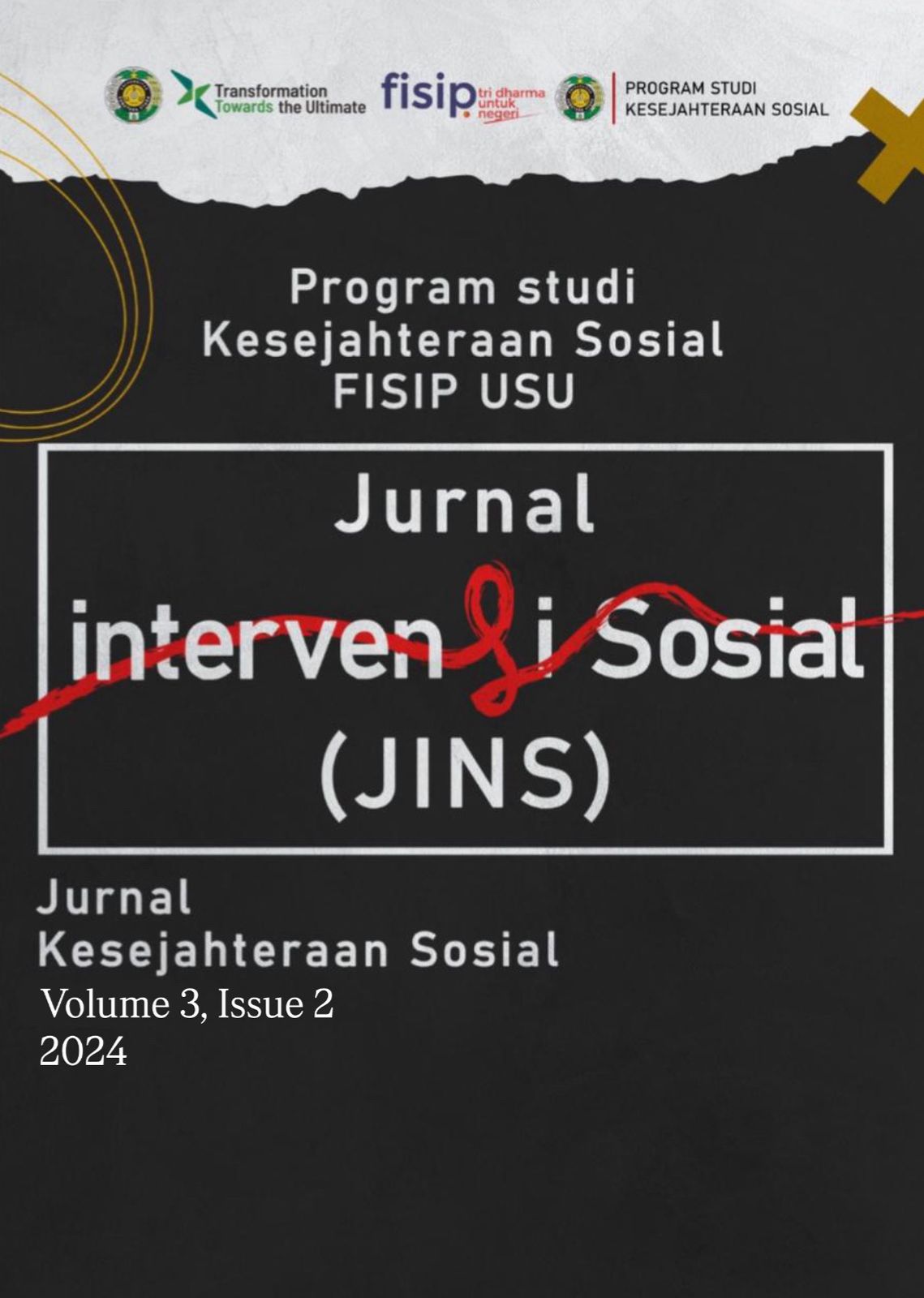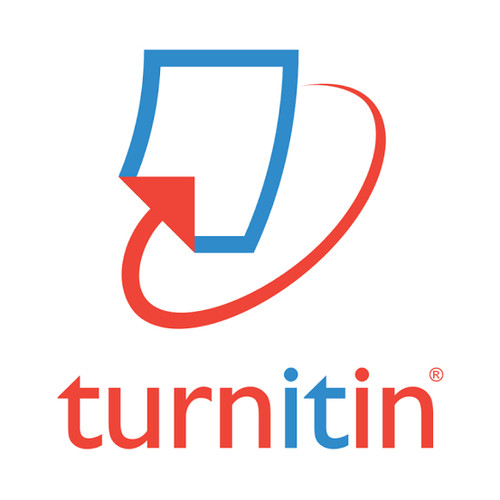The FENOMENA JUDI ONLINE DAN DAMPAKNYA BAGI MASYARAKAT
DOI:
https://doi.org/10.32734/intervensisosial.v3i2.17205Keywords:
Fenomena, Judi Online, Dampak, MasyarakatAbstract
Perkembangan teknologi menjadikan segala akses menjadi mudah hanya bermodal jaringan internet. Salah satunya cara mendapatkan uang hanya bermodalkan jaringan internet dengan bermain judi online yang lawan main boleh dimana saja dan uang taruhannya bisa melalui transfer antar bank. Seiring waktu fenomena judi online merambah di masyarakat, game ini dapat dimainkan dengan berbagai mekanisme dan bentuknya, perjudian umumnya dianggap sebagai kejahatan yang dapat merusak tatanan kehidupan sosial. Penelitian ini menggunakan studi pustaka. Metode pengumpulan data dari berbagai sumber buku, jurnal dan riset- riset terkait judi online. Hasil penelitian menunjukkan dibalik segala kemudahan akses dan janji keuntungan secara instan, judi online mempunyai dampak negatif dapat merusak sendi kehidupan. Upaya untuk menanggulangi judi online dilakukan tindakan preventif dan represif, dibutuhkan kerjasama dengan beberapa ISP (Internet Service Provider) untuk menutup semua situs-situs yang bermuatan konten perjudian
Downloads
References
Abbott, M., Binde, P., Clark, L., Hodgins, D., Johnson, M. A., Manitowabi, D., et al. (2018). Conceptual framework of harmful gambling: An international collaboration (3rd ed.). Canada: ON. Guelph.
Allami, Y., Hodgins, D. C., Young, M., Brunelle, N., Currie, S., Dufour, M., et al. (2021). A meta-analysis of problem gambling risk factors in the general adult population. Addiction, 116(11), 2968–2977. https://doi.org/10.1111/add.15449
Andr´e, F., Broman, N., Håkansson, A., & Claesdotter-Knutsson, E. (2020). Gaming addiction, problematic gaming and engaged gaming – prevalence and associated characteristics. Addictive Behaviors Reports, 12, Article 100324. https://doi.org/ 10.1016/j.abrep.2020.100324
Angus, D. J., Anjoul, F., Shannon, K., & Blaszczynski, A. (2020). Gambling related harms - community and clinical comparisons. Addiction Research and Theory, 28(3), 194–203. https://doi.org/10.1080/16066359.2019.1622001
Ashley, L. L., & Boehlke, K. K. (2012). Pathological gambling: A general overview. Journal of Psychoactive Drugs, 44(1), 27–37. https://doi.org/10.1080/ 02791072.2012.662078human
Baumeister, R. F., & Leary, M. R. (1995). The need to belong: Desire for interpersonal attachments as a fundamental human motivation. Psychological Bulletin, 117(3), 497–529. https://doi.org/10.1037/0033-2909.117.3.497
Bijker, R., Booth, N., Merkouris, S. S., Dowling, N. A., & Rodda, S. N. (2022). Global prevalence of help-seeking for problem gambling: A systematic review and meta-analysis. Addiction, 117(12), 2972–2985.
Bonetti, L., Campbell, M. A., & Gilmore, L. (2010). The relationship of loneliness and social anxiety with children’s and adolescents’ online communication. Cyberpsychology, Behavior, and Social Networking, 13(3), 279–285. https://doi.org/ 10.1089/cyber.2009.0215
Boyd, D. M., & Ellison, N. B. (2007). Social network sites: Definition, history, and scholarship. Journal of Computer-Mediated Communication, 13(1), 210–230. https:// doi.org/10.1111/j.1083-6101.2007.00393.x
Browne, M., Bellringer, M., Greer, N., Kolandai-Matchett, K., Langham, E., Rockloff, M., Du Preez, K., Abbott, M., (2017). Measuring the Burden of Gambling Harm in new zealand.
Cai, X., Cebollada, J., & Corti˜nas, M. (2022). A grounded theory approach to understanding in-game goods purchase. PLoS One, 17(1), Article e0262998. https:// doi.org/10.1371/journal.pone.0262998
Calado, F., Griffiths, M.D., (2016). Problem gambling worldwide: an update and systematic review of empirical research (2000–2015). J. Behav. Addict. 5 (4), 592–613.
Carey, P. A. K., Delfabbro, P., & King, D. (2022). An evaluation of gaming-related harms in relation to gaming disorder and loot box involvement. International Journal of Mental Health and Addiction, 20(5), 2906–2921. https://doi.org/10.1007/s11469- 021-00556-5
Chan, G., Huo, Y., Kelly, S., Leung, J., Tisdale, C., & Gullo, M. (2022). The impact of eSports and online video gaming on lifestyle behaviours in youth: A systematic review. Computers in Human Behavior, 126, Article 106974. https://doi.org/ 10.1016/j.chb.2021.106974
Cho, D. J., Kim, H. T., Lee, J., & Park, S. H. (2018). Economic cost–benefit analysis of the addictive digital game industry. Applied Economics Letters, 25(9), 638–642.
Connolly, T. M., Boyle, E. A., MacArthur, E., Hainey, T., & Boyle, J. M. (2012). A systematic literature review of empirical evidence on computer games and serious games. Computers & Education, 59(2), 661–686. https://doi.org/10.1016/j. compedu.2012.03.004
Cotte, J., & Latour, K. (2008). Blackjack in the kitchen: Understanding online versus casino gambling. Journal of Consumer Research, 35, 742–758.
Direcci´on General de Ordenaci´on del Juego (2023). Informes trimestrales. https://www. ordenacionjuego.es/es/informes-trimestrales.
Dighton, G., Roberts, E., Hoon, A. E., & Dymond, S. (2018). Gambling problems and the impact of family in UK armed forces veterans. Journal of Behavioral Addictions, 7(2), 355–365. https://doi.org/10.1556/2006.7.2018.25
Dowling, N. A., Merkouris, S. S., Greenwood, C. J., Oldenhof, E., Toumbourou, J. W., & Youssef, G. J. (2017). Early risk and protective factors for problem gambling: A systematic review and meta-analysis of longitudinal studies. Clinical Psychology Review, 51, 109–124. https://doi.org/10.1016/J.CPR.2016.10.008
Ferris, J.A., Wynne, H.J., (2001). The Canadian Problem Gambling Index. Canadian Centre on substance abuse Ottawa, ON.
Ekasari, P., & Dharmawan, A. H. (2012). Dampak sosial-ekonomi masuknya pengaruh internet dalam kehidupan remaja di perdesaan. Bogor: Departemen Sains Komunikasi dan Pengembangan Masyarakat IPB.
Espadafor, M., & Martínez, S. (2021). The negative consequences of sports betting opportunities on human capital formation: Evidence from Spain. PloS One, 16(10). https://doi.org/10.1371/JOURNAL.PONE.0258857
Francis, K. L., Dowling, N. A., Jackson, A. C., Christensen, D. R., & Wardle, H. (2015). Gambling motives: Application of the reasons for gambling questionnaire in an Australian population survey. Journal of Gambling Studies, 31(3), 807–823. https:// doi.org/10.1007/s10899-014-9458-1
Gaia, A., Sala, E., & Cerati, G. (2021). Social networking sites use and life satisfaction. A quantitative study on older people living in Europe. European Societies, 23(1), 98–118. https://doi.org/10.1080/14616696.2020.1762910
Gainsbury, S., Parke, J., & Suhonen, N. (2013). Consumer attitudes towards Internet gambling: Perceptions of responsible gambling policies, consumer protection, and regulation of online gambling sites. Computers in Human Behavior, 29(1), 235–245.
Gainsbury, S. M. (2015). Online gambling addiction: The relationship between internet gambling and disordered gambling. Current Addiction Reports, 2(2), 185–193. https://doi.org/10.1007/s40429-015-0057-8
Gonçalves, D., Pais, P., Gerling, K., Guerreiro, T., & Rodrigues, A. (2023). Social gaming: A systematic review. Computers in Human Behavior, 147, Article 107851. https://doi. org/10.1016/j.chb.2023.107851
Hagfors, H., Oksanen, A., & Salonen, A. H. (2023). Gambling Motives and Offshore Gambling: A Finnish Population Study. Journal of Gambling Studies. https://doi.org/ 10.1007/s10899-023-10253-8
Hofmarcher, T., Romild, U., Spångberg, J., Persson, U., & Håkansson, A. (2020). The societal costs of problem gambling in Sweden. BMC Public Health, 20(1). https://doi. org/10.1186/S12889-020-10008-9
Huang, L., Zheng, D., & Fan, W. (2022). Do social networking sites promote life satisfaction? The explanation from an online and offline social capital transformation. Information Technology & People (West Linn, Or.), 35(2), 703–722. https://doi.org/10.1108/ITP-03-2020-0143
James, R. J., & Bradley, A. (2021). The use of social media in research on gambling: A systematic review. Current Addiction Reports, 8, 235–245.
Kaakinen, M., Sirola, A., Savolainen, I., & Oksanen, A. (2020a). Shared identity and shared information in social media: Development and validation of the identity bubble reinforcement scale. Media Psychology, 23(1), 25–51.
Keipi, T., Nasi, M., Oksanen, A., & Rasanen, P. (2017). Online hate and harmful content: Cross-national perspectives. New York, NY: Routledge.
Kir´aly, O., Sleczka, P., Pontes, H. M., Urb´an, R., Griffiths, M. D., & Demetrovics, Z. (2017a). Validation of the ten-item internet gaming disorder test (IGDT-10) and evaluation of the nine DSM-5 internet gaming disorder criteria. Addictive Behaviors, 64, 253–260.
Kitchens, B., Johnson, S. L., & Gray, P. (2020). Understanding echo chambers and filter bubbles: The impact of social media on diversification and partisan shifts in news consumption. MIS Quarterly, 44(4), 1619–1649. https://doi.org/10.25300/MISQ/ 2020/16371
Kuss, D. J., & Griffiths, M. D. (2011). International Journal of Environmental Research and Public Health, 8(9), 3528–3552. https://doi.org/10.3390/ijerph8093528. Online social networking and addiction–a review of the psychological literature.
Laconi, S., Pir`es, S., & Chabrol, H. (2017). Internet gaming disorder, motives, game genres and psychopathology. Computers in Human Behavior, 75, 652-659.
Latvala, T., Lintonen, T., & Konu, A. (2019). Public health effects of gambling - debate on a conceptual model. BMC Public Health, 19(1). https://doi.org/10.1186/S12889- 019-7391-Z
Lobez-Gonzales, H., Estévez, A., & Griffiths, M. (2019). Internet-based structural characteristics of sports betting and problem gambling severity: Is there a relationship? International Journal of Mental Health Addiction, 17, 1360–1373.
Macey, J., Hamari, J., Sj¨oblom, M., & T¨orh¨onen, M. (2021). Relationships between the consumption of gamblified media and associated gambling activities in a sample of esports fans.
Marchant, A., Hawton, K., Stewart, A., Montgomery, P., Singaravelu, V., Lloyd, K., et al. (2017). A systematic review of the relationship between internet use, self-harm and suicidal behaviour in young people: The good, the bad and the unknown. PLoS One, 12(8), Article e0181722. https://doi.org/10.1371/journal.pone.0181722
Mora-Salgueiro, J., García-Estela, A., Hogg, B., Angarita-Osorio, N., Amann, B. L., Carlbring, P., … Colom, F. (2021). The prevalence and clinical and sociodemographic factors of problem online gambling: A systematic review. Journal of Gambling Studies, 37(3), 899–926.
Muggleton, N., Parpart, P., Newall, P., Leake, D., Gathergood, J., & Stewart, N. (2021). The association between gambling and financial, social and health outcomes in big financial data. Nature Human Behaviour 2021 5:3, 5(3), 319–326. doi: 10.1038/ s41562-020-01045-w
Naranjo-Zolotov, M., Turel, O., Oliveira, T., & Lascano, J. E. (2021). Drivers of online social media addiction in the context of public unrest: A sense of virtual community perspective. Computers in Human Behavior, 121, Article 106784.
Odgers, C. L., & Jensen, M. R. (2020). Annual research review: Adolescent mental health in the digital age: Facts, fears, and future directions. Journal of Child Psychology and Psychiatry, 61(3), 336–348. https://doi.org/10.1111/jcpp.13190
Oksanen, A., Savolainen, I., Sirola, A., & Kaakinen, M. (2018). Problem gambling and psychological distress: A cross-national perspective on the mediating effect of consumer debt and debt problems among emerging adults. Harm Reduction Journal, 15(1), 45.
Oksanen, A., Sirola, A., Savolainen, I., & Kaakinen, M. (2019). Gambling patterns and associated risk and protective factors among Finnish young people. Nordic Studies on Alcohol and Drugs, 36(2), 161–176.
Oksanen, A., Oksa, R., Savela, N., Kaakinen, M., & Ellonen, N. (2020). Cyberbullying at work: Socia media identity bubble perspective. Computers in Human Behavior, 109. https://doi.org/10.1016/j.chb.2020.106363
Perini, G., Ramusino, M.C., Sinforiani, E., Bernini, S., Petrachi, R., Costa, A., (2019). Cognitive impair- ment in depression: recent advances and novel treatments. Neuropsychiatric Dis. Treat. 15, 1249-1258.
Plan Nacional sobre Drogas (2023). Informe de adicciones comportamentales. https://pnsd. sanidad.gob.es/profesionales/sistemasInformacion/sistemaInformacion/pdf/2023_Informe_Trastornos_Comportamentales.pdf.
Rodgers, R. F., Skowron, S., & Chabrol, H. (2012). Disordered eating and group membership among members of a pro-anorexic online community. European Eating Disorders Review, 20(1), 9–12. https://doi.org/10.1002/erv.1096
Saunders, J. B., King, D., Mann, K., Wei, H., Long, J., Fauth-Bühler, M., et al. (2017). Gaming disorder: Its delineation as an important condition for diagnosis, management, and prevention. Journal of Behavioral Addictions, 6(3), 271–279. https://doi.org/10.1556/2006.6.2017.039
Savolainen, I., Sirola, A., Vuorinen, I., Mantere, E., & Oksanen, A. (2022). Online Communities and Gambling Behaviors — a Systematic Review.
Sherer, J. (2021). Video games: From harmless pastime to internet gaming disorder. In P. Levounis, & J. Sherer (Eds.), Technological addictions (pp. 1–23). American Psychiatric Association Publishing.
Sirola, A., Savela, N., Savolainen, I., Kaakinen, M., & Oksanen, A. (2020). The Role of Virtual Communities in Gambling and Gaming Behaviors: Systematic Reviews.
Sirola, A., Nyrhinen, J., & Wilska, T. A. (2023). Psychosocial Perspective on Problem Gambling: The role of Social Relationships, Resilience, and COVID-19 Worry. Journal of Gambling Studies, 39(3), 1467–1485. https://doi.org/10.1007/S10899-022- 10185-9
Soekanto, Soerjono. (2017). Sosiologi Sebagai Pengantar. Jakarta : Rajawali Pers.
Stevens, M. W., Dorstyn, D., Delfabbro, P. H., & King, D. L. (2021). Global prevalence of gaming disorder: A systematic review and meta-analysis. Australian and New Zealand Journal of Psychiatry, 55(6), 553–568.
Stewart, S. H., & Zack, M. (2008). Development and psychometric evaluation of a three-dimensional gambling motives questionnaire. Addiction, 103(7), 1110–1117. https://doi.org/10.1111/j.1360-0443.2008.02235.x
Sudarto. (1986). Kapita Selekta Hukum Pidana. Bandung: Alumni.
Syvertsen, A., Ortiz de Gortari, A. B., King, D. L., & Pallesen, S. (2022). Problem mobile gaming: The role of mobile gaming habits, context, and platform. Nordisk Alkohol- & Narkotikatidskrift: NAT, 39(4), 362–378. https://doi.org/10.1177/ 14550725221083189
Tabri, N., Xuereb, S., Cringle, N., & Clark, L. (2022). Associations between financial gambling motives, gambling frequency and level of problem gambling: A meta-analytic review. Addiction, 117(3), 559–569. https://doi.org/10.1111/add.15642
The Swedish Gambling Authority (2018). Fördubbling i spel om pengar på internet 2007-2016. Retrieved Dec 16, 2019 from https://www.spelinspektionen.se/om-oss/ statistik/statistiknytt/fordubbling-i-spel-om-pengar-pa-internet-2007-2016/.
The Swedish Gambling Authority (2019). Aktuell statistik [Current statistics]. Retrieved Dec 13, 2019 from https://www.spelinspektionen.se/om-oss/statistik/.
Tseng, F. C., Huang, H. C., & Teng, C. I. (2015). How do online game communities retain gamers? Social presence and social capital perspectives. Journal of Computer- Mediated Communication, 20(6), 601–614.
Uwiduhaye, M. A., Niyonsenga, J., Muhayisa, A., & Mutabaruka, J. (2021). Gambling, Family Dysfunction and Psychological Disorders: A Cross- Sectional Study. Journal of Gambling Studies, 37(4), 1127–1137. https://doi.org/10.1007/S10899-020-09986-7
Zhou, T. (2011). Understanding online community user participation: A social influence perspective. Internet Research, 21(1), 67-81.
Downloads
Published
How to Cite
Issue
Section
License
Copyright (c) 2025 Jurnal Intervensi Sosial

This work is licensed under a Creative Commons Attribution-ShareAlike 4.0 International License.








